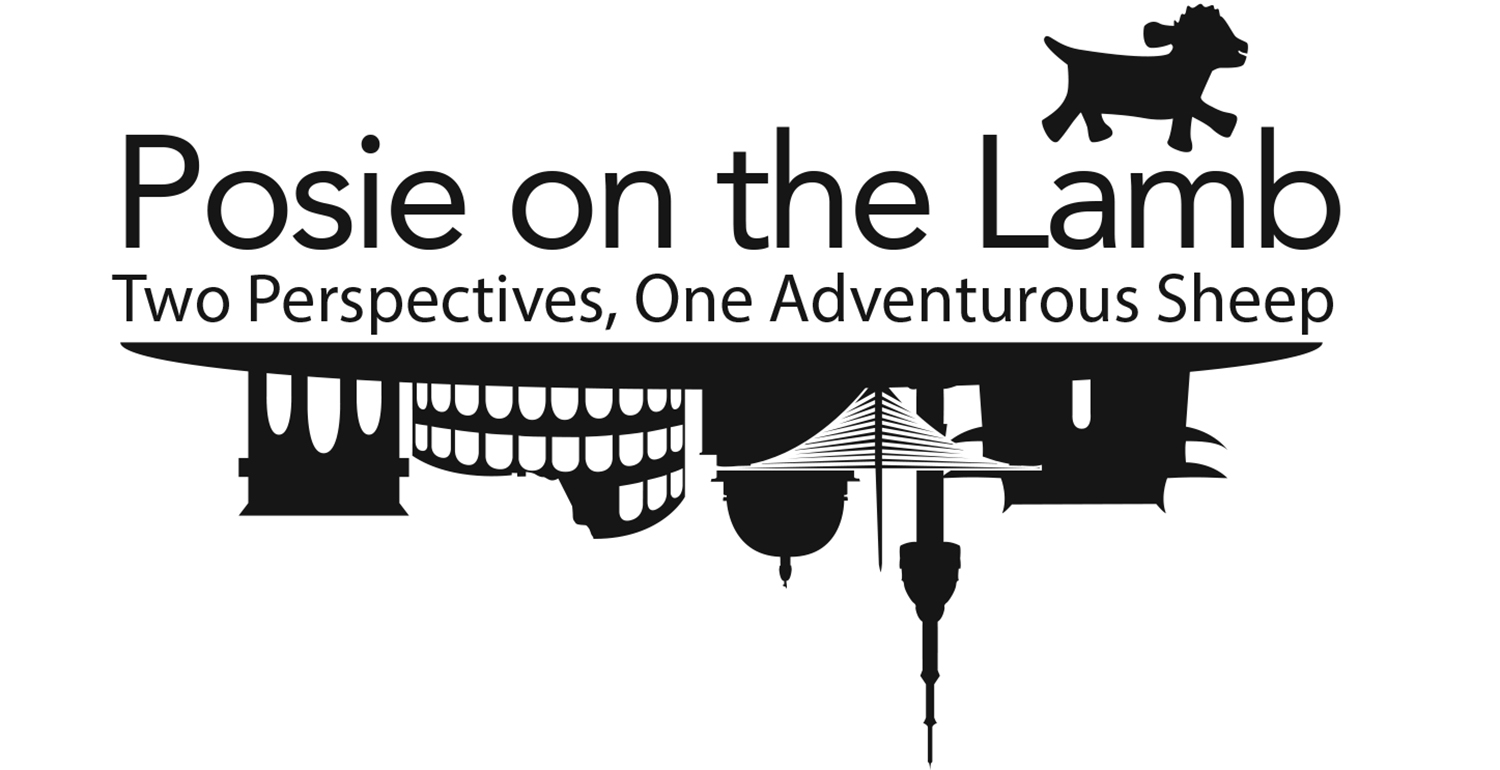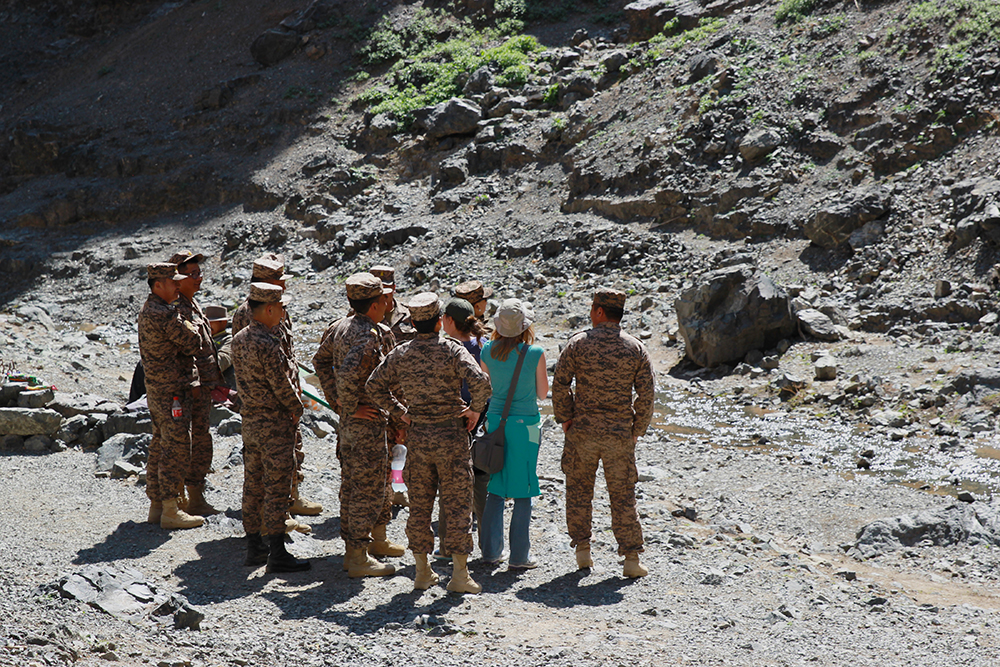Here There Be Monsters

The exclamation points started a few words into Lisa's email.
A diligent traveler, she was researching our upcoming trip to the Gobi Desert and had stumbled upon distressing information. “Have you hear of this wormsnake spiky nightmare?!” she wrote in justifiable alarm.
Said nightmare was the Gobi Death Worm, a five-foot long serpent that lives beneath the arid desert surface. Highly poisonous, it can spit venom like a cobra. The Worm also uses electric shocks to paralyze its prey, and is said to be able to take down a camel.
It is also entirely fictional.
It’s difficult to know what’s real in Mongolia, even in the general omniscience of the Google Age. There’s a sense of fairytale surrealism about this country, where people hunt with eagles and can sing two notes at the same time. Someone with no moral compass whatsoever might think it’s funny to convince hapless visitors of the existence of deadly electro-worms.
Regrettably, we are those people. Sam replied to Lisa’s email immediately: Wear thick boots.
Then, remembering how much we wanted visitors, we retracted the lie and begged her to come anyway. Lisa nobly boarded a plane with our friend Paul, whom she may have planned to use as worm bait.
The legend of the Death Worm has circulated among travelers since the 1920s, and investigative camera crews still occasionally comb the desert. The creature even scored a delightfully melodramatic episode on National Geographic’s Beast Hunter show in 2011. But the Death Worm’s biggest value is as a conversation starter. Bringing it up is the surest way I know to make a Mongolian laugh—which is what Tengis did as we drove south from Ulaanbaatar.
Tengis, our guide, had grown up in the South Gobi. He knew where all the non-existent roads led, how to find nomadic herders this time of year, and which rocks to turn over for dinosaur fossils. And he 100% knew the Death Worm didn’t exist. Probably. After all, legends became legends for a reason, right?
I leaned up from the backseat to ask questions as he drove. Tengis’ English was roughly on par with my Mongolian, and we communicated in a messy jumble of the two. We were headed toward Yoliin Am, an ice formation in the desert. It was an improbable place. If we saw the Worm anywhere, Tengis figured it would be there.
Out the window, the wildlife became increasingly exotic. Scattered cows around Ulaanbaatar gave way to herds of puffy, over-weighted sheep and nimble goats. Blue-brown camels appeared when we hit the Middle Gobi, wandering unsupervised through the rocky blank. Horses roamed everywhere—this was Mongolia after all.
The animals were completely oblivious to cars. Tengis slowed to shimmy the SUV through herds of indifferent goats or serenely obstinate horses. He stopped completely for the vultures. A flock of vultures is appropriately known as a “wake.” This one was attended to the earthly remains of some poor animal—we couldn’t see what among the swooping feathers. The vultures’ wingspans were as wide as our car, and their bald, hooked profiles looked exactly like caricatures from a Warner Brother’s cartoon.
This was awfully exotic to a bunch of Midwesterners, but none of these animals actually spat venom or emanated a deadly electric current. Lisa and I were holding out for a Death Worm, preferably seen from a safe distance through the window of a moving car. As the landscape grew increasingly lunar and otherworldly, our imaginations became increasingly optimistic. Here there be monsters? Well, why not?
Tengis pulled up at the signboard for Yoliin Am and hopped out of the car. There was a cluster of gift shop gers and a small museum next to the parking lot; a knot of drivers chatted by their cars. Tengis conferred with them, then pointed us toward the museum.
“Gobi Worm,” he said. Lisa and I exchanged hopeful looks and stepped inside.
The museum showcased local wildlife with the most endearingly awful taxidermy I ever hope to see. It looked like it had been done on the cheap by someone’s cousin Vinnie. The wolf’s face appeared to be melting and the snow leopard looked frankly drunk. We were enjoying the Great Gobi Gerbil display when Paul called us into the next room.
“I found your Death Worm.”
“Where?”
Growing up, our movie collection was hodgepodged together on a stack of re-recordable VHS tapes. Our copy of Who Framed Roger Rabbit shared a tape with Tremors. Any time I wanted to watch the exploits of my favorite cartoon bunny, my dad had to blindly fast forward through 90 minutes of killer worm carnage.
“Don’t look,” he’d say (as if that ever worked) as he pressed play. It was a 50-50 shot whether the view between my splayed fingers would be a daffy, bouncing rabbit or a thirty-foot worm monster spattering chunks of gore across the American desert. It was decades before I realized Tremors was a comedy.*
That's how I envisioned the Death Worm: a Hollywood-style humanity-munching rampage machine. The museum directors had something different in mind. Their display was a twelve-inch purplish blob that looked remarkably like poo. In fact, I would’ve dismissed it as poo (From what? The Great Gobi Elephant?) if not for the index card beside it reading, “Mongolian Death Worm.”
It was something of a letdown.
Not believing in monsters is an expression of faith, not knowledge. However improbable, there’s a small, tickly possibility that Sasquatch, Nessie, and the Gobi Death Worm might really be out there. Sure, you'd be wackadoo to believe it, but no one could prove you wrong.
The fun is in that spark of doubt, and the museum's plaster poop exhibit extinguished it for me. If their worm had been ridiculously fantastical, with fangs and spikes and red glowing eyes, at least it would have been exciting. Stupid, but exciting. This half-hearted plop was so boring it discredited the entire Worm Monster theory. And while I didn’t want to die in a puddle of killer worm poison, I was surprisingly bummed to lose the opportunity.
That night, awake in our ger, I heard a low rumble in the darkness. The round tent walls distorted the sound, but it seemed to be coming from beneath the floor. I figured it was a dream until Lisa brought it up the next morning.
“Did you hear that weird noise?” she asked. And, confirming each other’s reality, we jumped to the same, absurd, irrefutable conclusion:
“Death Worm.”
-Erin
*It also took me years to realize just how dark and twisted Who Framed Roger Rabbit was.
Yoliin Am (ЁлынАм) is a valley gorge about an hour’s drive from the desert city Dalanzadgad. The river at the bottom is so completely protected by the high, narrow cliffs that its winter ice doesn’t thaw until July. It’s an easy walk from the parking lot, but you can also hire a horse or bike. As part of the national park system there’s a ₮3,000 entry fee, which includes entrance to the museum.Bring a jacket.














